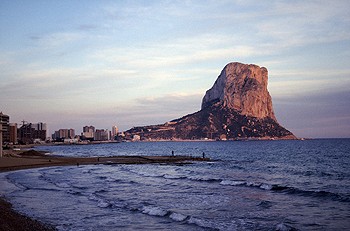
The soaring south face, with its complex cave systems and wheeling, shrieking gulls weighs in at the nicely rounded figure of a thousand feet high. Despite the fact that not all of the rock is perfect, many of the climbs here prove to be a great tonic, especially if you are bored with mini-clip-ups right by the roadside. It has to be admitted that it easy to take one look at the place (which is especially impressive when seen from directly below) and head off back for another session at Sella in double quick time, but the routes are well worth the effort. I have climbed almost 20 climbs on this superb cliff and a mention of any of them brings back great memories of superb climbing with good company, spectacularly stunning situations, and plenty of fear induced adrenaline coursing through my veins.
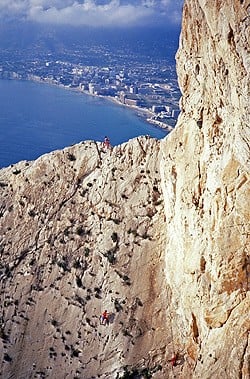
However inviting it may appear, a trip up any route on the face is not to be underestimated. The routes are long and often strenuous; winter bivouacs on the cliff are more common than you might expect, and colder than you would wish for. Many years ago I wrote a short introductory piece on the Costa Blanca for Climber magazine, long before it was as important a venue on the climbing circuit, describing Diedro UBSA amongst others. A short while later, we met a couple out there who had arrived in Spain just before Christmas. Suitably organised, they loaded the turkey in to the oven, the Cava into the fridge and popped off to do the route. Because of a late start, darkness began to fall and they tried to retreat from high on the cliff in the gathering gloom. Then the inevitable happened; the ropes jammed. They spent Christmas night up there, with nothing more than a couple of pages of a magazine article to wrap around their legs to keep them warm.
A helmet is also advisable, especially on the easier lines, and a water bottle may be a good idea as it can be pretty hot on the face, even in the middle of winter. Whether you choose to carry a sack depends upon if you fancy the walk off the back in rock shoes. Personally, I prefer the freedom of traveling light - gearing up at the car and approaching the face with my harness on and with rock boots unfastened. Of course on the stony and tortuous descent, I always wonder at the wisdom of this approach. The obvious alternative is to get a non-climbing member of the party to walk round with shoes and a selection of refreshments. It is well worth making the effort of impressing on them how good the view from the top really is!
If you are climbing within your grade, an ascent of the face shouldn't take much more than three or four hours even on the longest routes. With so much fixed gear in place it is possible to get a move on without the slow progress of having to place most of your own gear. If you are on the climbs for longer than this, the heat and lack of water can have a debilitating effect, so it is best to get cracking or start early to avoid the heat of the day. When I first did the classic of Via Valencianos the weather was in an unsettled pattern with frequent afternoon thunderstorms. I persuaded Sherri that she would enjoy the trip, and with thoughts of lightning and hailstorms in mind we cracked on up the route. Pulling onto the summit ridge even I was surprised to find we had done it in only one hour, forty five minutes – we made it back to the car just as the rain started.
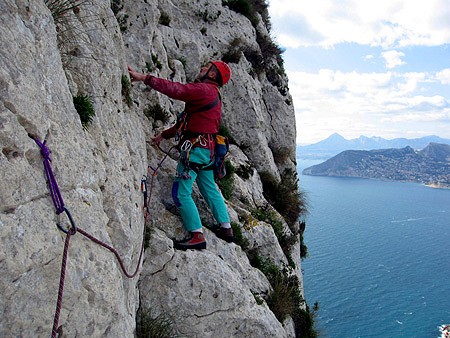
The right-hand side of the Valencianos slab is bound by the long curving corner of Polvos Magicos, (F5+ or HVS 5b). This six pitch outing follow a continuous series of slabby grooves, though the tricky and slippery layback of the first main pitch is where the real 'fun' is at. Sharing many of the stances with Valencianos means that escape is always an easy option from the route. Further to the right on steeper terrain, though at about the same grade, is the conspicuous soaring groove line that is the major classic of Diedro UBSA (10 pitches up to F5+, about HVS 5b). As with many folks, this was my first route on the cliff. As the name suggests, the route follows a long twisting diedre, with a couple of short, tricky (and bolt protected) walls, to reach the top of a tower. From there it continues into a small cave near the cliff top. Escape from here requires a short hair-raising diagonal abseil from a huge bunch of tat, that feels all the more exposed because it is in such stark contrast with the way that most of the rest of the climb is well sheltered. A couple of easy corners lead to the cliff top.
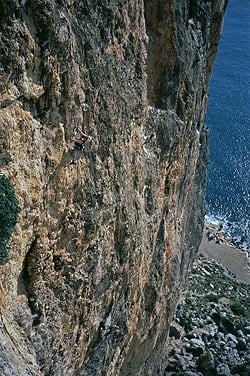
Unbeknownst to most visitors who climbed these four classic routes, was the fact that the locals had been putting a mass of work in adding a set of fully bolted outings to the huge face. These newer climbs tended to tackle the open walls between the main crack lines and involve climbing some of the very best rock on the whole cliff – nowadays they are very much on the circuit. Arguably the best of these are the trio that tackle the tallest section of the face: El Navigate, Linea Magic and Via Costa Blanca, English translations of the names shouldn't really be too difficult. Although all three are given grades of F6c to F7a and are about E4 if done completely free, they are all fully bolted (a 60m rope, 15 quick-draws and belay gear is really all you need if you are confident in your ability) and on each route the difficulties are short lived. Pulling on the occasional bolt when things get tough can bring the grade down to a much more reasonable F6a, or about E2.
I did the first of these, El Navigate (F6c) back in 1991 and it was a revelation. A short traverse out from the gloomy safety of Diedro UBSA's third pitch along an inclined ramp saw us ensconced at a triple bolt belay below a most alarming looking wall of vertical rubble, glued to the face by a rather unreliable looking red sand cement. Fortunately the 10mm bolts that protect the pitch are drilled into the solid limestone wall to the right of the rubble and so the climbing proved to be safe if somewhat spooky. Any 'casualness' about the pitch was short lived when Colin pulled a loose piece of flowstone off, well above the level of the rubble. He managed to stay in contact with the rock and throw the biggest piece well, clear but a smaller chunk caught me a glancing blow on the side of the head. A quick dizzy spell gave me a worrying moment before I realised disaster had been avoided, though no thanks to me; so much for not wearing a helmet! Higher up the route climbs the massively exposed rib between UBSA and Gomez Cano. The guide indicated a grade of A0 for a couple of moves but by swinging right into a spiky crack we managed it free, arriving at the welcoming summit party well pleased with ourselves despite the near faux-pas lower down.
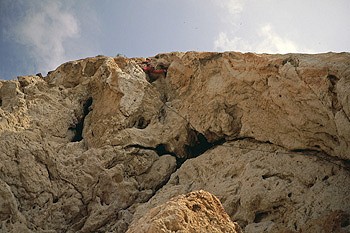
The year before last it was back again for one of the most recent outings Via Costa Blanca (F6c+), a route that weaves up the huge narrowing pillar to the left of Diedro UBSA. After an easy solo start, three sustained pitches of F6a/b led almost to the crest of the initial pillar. Whilst tackling the final rather rubbly and damp crack I glanced down to see a dozen or so folks gathered at the foot of the start of Via Valencianos several hundred feet directly below me. They sat around chatting and taking the morning air, doubtless many of them with helmets in their sacks and obviously completely oblivious to the danger they were in. I climbed the crack as carefully as possible not wishing to spoil anybody's day, especially my own! From a cave stance, a precarious wall to the left of the UBSA abseil led into a higher cave which was quitted by the exposed left arete, monkeying about on hanging tufa 'dongs' with a crucial dyno for a hidden pocket and then a short steep wall took us back to those familiar summit slopes and the traditional congratulations.
Last February I finally got round to doing Via Pany on the North Face, although not of the quality of the big outings on the South Face it gave myself and old time Dave Gregory (aged 71!) an excellent couple of hours, seven pitches – about VS 4c in standard – and of course – it is 'proper' climbing with very little fixed gear. Add in the devious route finding, the odd bit of loose rock and by the time we had topped-out, my respect for the first team poking their noses up there fifty years ago had risen a couple of notches.
If you are headed for the Costa Blanca this winter consider dragging yourself away from the pleasures of the roadside cliffs and spend a few hours on the mighty Penon. The experience is sure to prove a memorable one, even if you don't enjoy it. Who knows the magnificent atmosphere of place might just get under your skin and have you coming back for more!
rockfax_publication(86, 320, 'right') ?>
Peñón de Ifach - Fact File
ACCESS: From Calpe drive to the harbour - the dirt road below the cliff is closed to traffic. Park by the harbour wall and leave nothing in the car. Follow the dirt road to the quarry at its end then trend back left under the face to reach the routes. Twenty minutes from the car.
THE CLIMBS: All the routes described are on the south face of the cliff, they can get hot in winter and unbearable at other times of year. They are eight to ten pitches long on limestone that is generally of good quality though loose patches do occur.
GUIDEBOOK: All the routes are described in pitch by pitch detail in Costa Blanca (2005) by RockFax

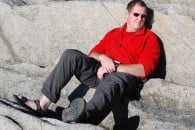

Comments